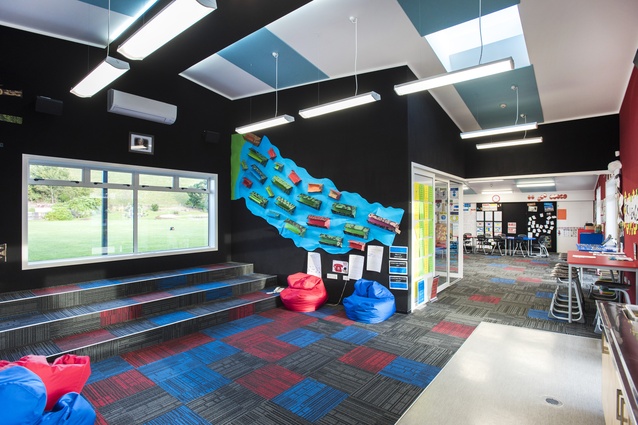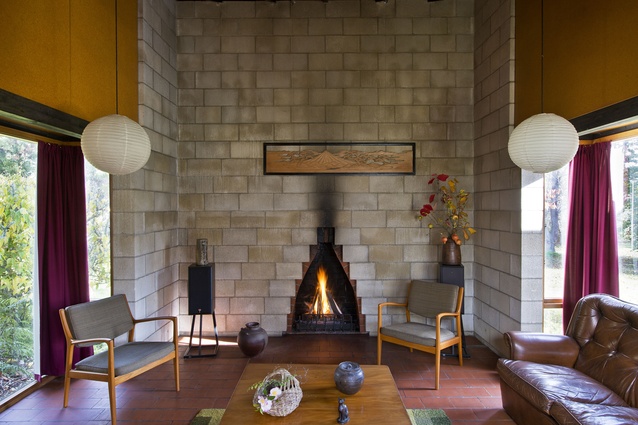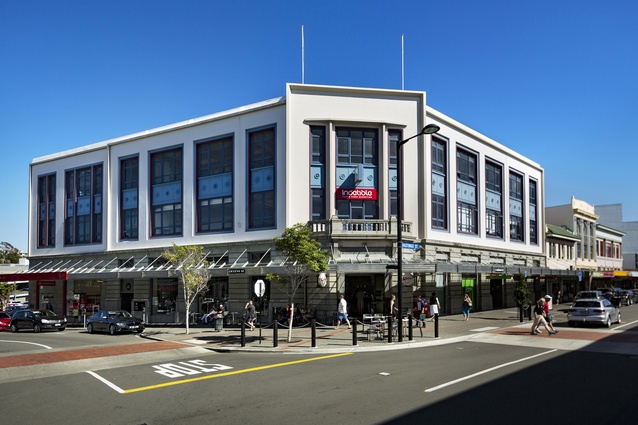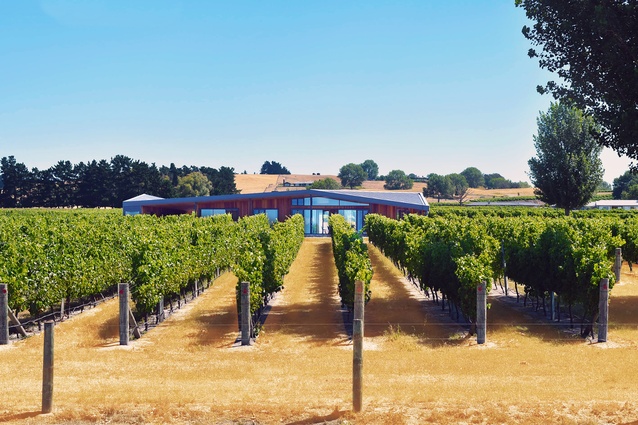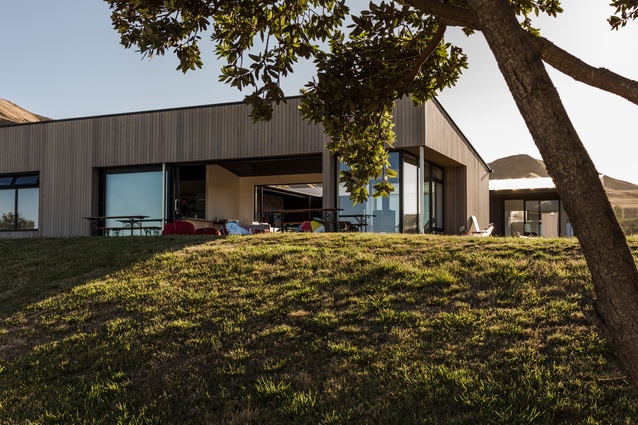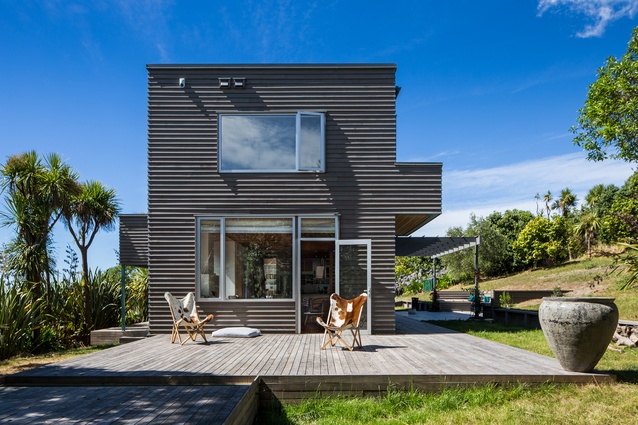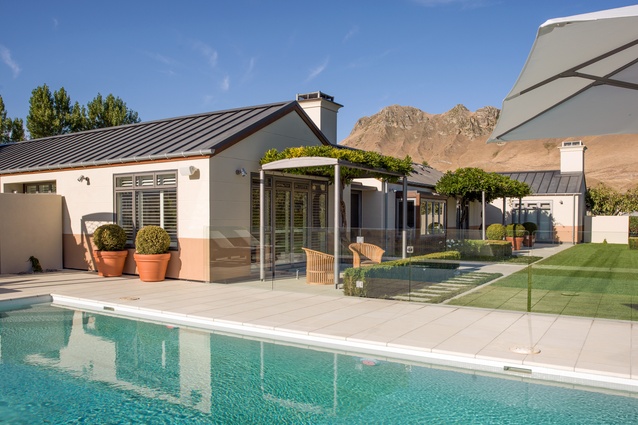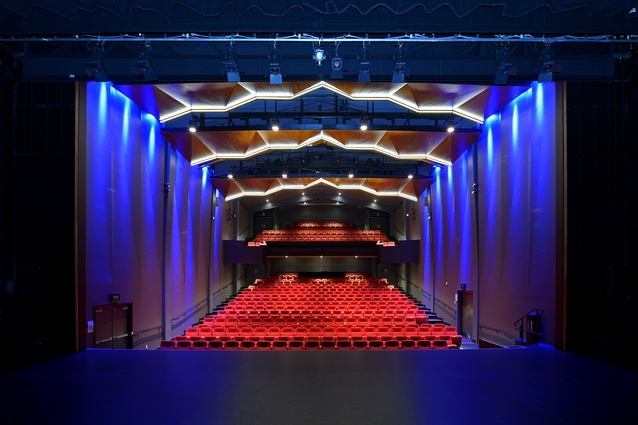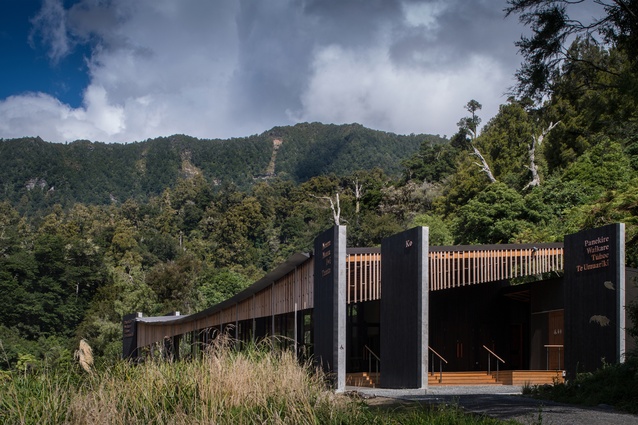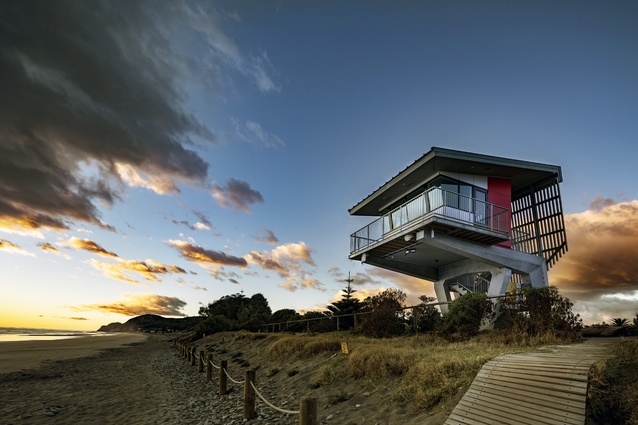2017 Gisborne/Hawke’s Bay Architecture Awards
11 projects have received awards in the 2017 Gisborne/Hawke’s Bay Architecture Awards, held at Hastings Art Centre on Friday 12 May, with many responding to the surrounding natural environment.
Jury convenor Sol Atkinson said this year’s awards were the perfect opportunity to “recognise the architect’s role in forming, and protecting, the quality of the future built and natural landscapes. Many of this year’s 15 shortlisted works occupied sites with sea or river views, and connections to water played a strong part in the story of building”.
This year’s award-winning houses were all “fine examples of how architectural responses can be sculpted by the influences of wind, the views, the contours of the land, and the client’s brief,” Atkinson commented.
The 2017 jury comprised Sol Atkinson (jury convenor) of Atkinson Harwood Architecture, Hamish Cameron of Archimedia, Ben Hayes of RTA Studio and Cameron Drury.
Full list of winners with citations below:
COMMERCIAL ARCHITECTURE AWARD:

1 Wright Street by Architecture HDT Hawkes Bay
Drawing on the woolshed building forms common in the Ahuriri precinct, these deceptively simple interventions to the building structure, utilising a considered material palette, have transformed what was a less than appealing building. The creation of the sawtooth roof form that provides natural light, and the sacrifice of lettable floor area for exterior space on the first floor, makes for enjoyable and welcoming commercial spaces.
EDUCATION AWARD:
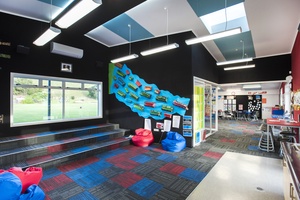
Kaiti School, Wharekauri – New Classrooms by Architects 44
Taking cues from existing classroom blocks and responding to the strong community connection to the school, this project accommodates changing pedagogy by creating a flexible learning space that has been embraced by those who teach and learn in it. The exterior sits comfortably in its surrounds, and references the school’s history while anticipating its next phase of development. Clever and considered use of every square metre provides an uncluttered, highly usable and adaptable space. Well thought-out detailing and construction methods minimised waste in order to maximise learning areas.
ENDURING ARCHITECTURE AWARD:
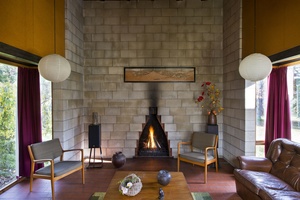
Martin House (1970) by John Scott Architect
A delightful and inspiring home with playful uses of volume, light and the relationship between shared and private space. Architectural and construction skills are clearly visible throughout and provide evidence of the enduring nature of the home. The pottery building set not far from the home, while more pared back in line with its function, has a similar charm and reflects a design period which not only inspired the building but the client’s ceramic designs.
HERITAGE AWARD:
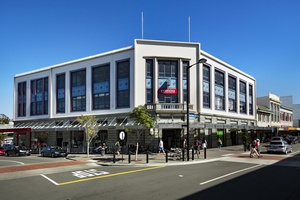
Central Post Office Redevelopment by Paris Magdalinos Architects
This significant heritage building, which survived the 1931 earthquake, was earmarked for demolition. Through numerous design iterations for the prominent corner site, a redevelopment option with surprisingly minimal strengthening was devised. With the support of the client and a key tenant, the building was saved and given a new life, with greatly enhanced accessibility. The interventions in the building are subtle and retain the building’s pre and post-quake attributes. Storage areas have been successfully converted into retail spaces facing onto a public carpark, resulting in the activation of the previously neglected side of the site.
HOUSING AWARDS:
Robertson House by Atelierworkshop
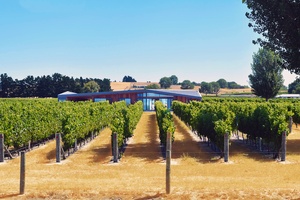
Responding to the gently rolling vineyard landscape of Te Awanga, a single folded roof element creates a large, sheltering canopy under which the various functions of this house are arranged. Maximum spatial interest has been achieved below this roofline through clever and often unexpected planning that challenges conventional expectations. Tight circulation connects the major living and sleeping spaces and the separate writer’s studio, which is focused north-east down the vineyard to sea views. Externally, a harmonious palette of materials blends the forms into the landscape, while internally the bleached plywood-lined volumes are defined with thoughtfully detailed cabinetry, often highlighted with punchy blocks of colour.
Resene Colour Award:
A carefully edited mix of cladding materials, including dark profiled steel and vertical cedar weatherboards and battens in a natural finish, defines the various flush and recessed surfaces of this sculptural home, while blending with the natural landscape. Internally, daring bright colour accents in blues and shocking pink-painted joinery units successfully lift an otherwise neutral palette of bleached and natural plywood finishes, and cleverly define the various activity zones.
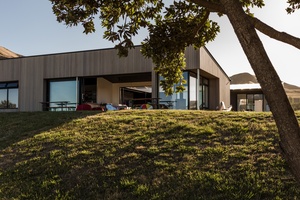
Shoal Beach House by Gavin Cooper Architect
Referencing the typology of beachside camp grounds and unadorned farm sheds, the simple form of this modern beach house stands crisply against its dramatic coastal backdrop. The building reveals itself as a collection of self-contained modules containing consistently well detailed, light-filled living and sleeping spaces, as well as a distinctly utilitarian masonry ablution block, all arranged around and accessed from a central sheltered outdoor gathering space. Thoughtful planning ensures sea views are maintained throughout, and considerable care is evident in the minimal detailing of the cedar weatherboard “skin”, including integrated sliding panels and deeply recessed openings.
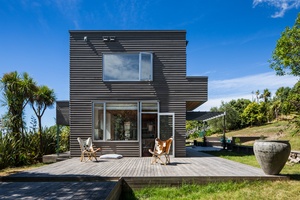
Mangakuri Bach by Parsonson Architects
Set on a site with full views down the length of the beach, this two-storey home sits proudly amongst the native trees planted 17 years ago in anticipation of its arrival. The eave-less building form is not typical of an East Coast bach but expresses the clients’ inspiration for the house. The simple yet considered interior combines honest materials and exposed utilities with considered timber detailing crisp white elements. Three bedrooms on the first floor have stunning vistas through the trees to the seas beyond, and a smaller and detached garage with sleep-out above extends the usability of the site with a similar refined design approach.
HOSPITALITY AND RETAIL AWARDS:
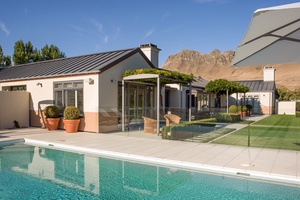
Craggy Range – The Lodge by Clarkson Architects
Within an existing footprint, a private luxury guest lodge has been thoughtfully converted from a 20-year-old residence for a winemaker. Throughout, this expansive home-away-from home delivers unpretentious comfort in its established Hawkes Bay vineyard setting. The building is meticulously detailed and executed; quality materials and well-proportioned forms and spaces match the high standard of the neighbouring winery buildings and accommodation. Bare floorboards, high ceilings and painted timber linings create an atmosphere of rustic sophistication, and generous openings provide easy connection to landscaped gardens and a rejuvenated private central courtyard. This is the place to settle back with a glass of wine, soak up the sun and marvel at an astonishingly beautiful location.
PUBLIC ARCHITECTURE AWARD:
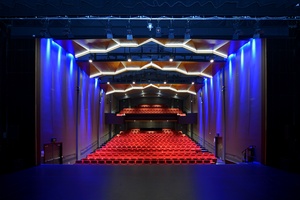
War Memorial Theatre by Shand Shelton
The rejuvenation of the War Memorial Hall and Theatre has created a successful public building for Gisborne. The old and new have been skilfully connected to provide access to a dual purpose facility for commemoration and performance. The creation of the poppy ceiling and lighting feature within the multi-functional entrance hall reminds us of the significance of this space. Passing through into the new theatre the quality of sound, material and light is evident. The architect’s programme, and installation of the state-of-the-art technical operation, has created an environment that allows local, national and international performances to occur within a welcoming civic building.
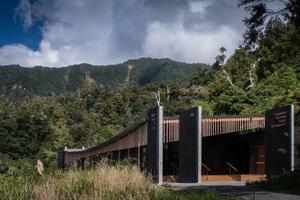
Te Wharehou o Waikaremoana by Tennent Brown Architects
The new visitor centre and administration building rests comfortably into the natural beauty of Lake Waikaremoana and is a testament to the architect’s relationship with Ngāi Tūhoe and understanding of the brief. The significance of the site, the surrounding landscape and local narratives have been woven skilfully to complete a successful functional operation. On approach, the building takes a respectful second place to the lake as it references the lake basin and sandstone hills with its soft draping roof and vertical slabs. The fenestration and interior materials are limited to local timber and recycled timber taken from the Āniwaniwa Vistor Centre, which create natural warmth to the interior space. An honest building that reflects its beautiful setting.
SMALL PROJECT ARCHITECTURE AWARD:
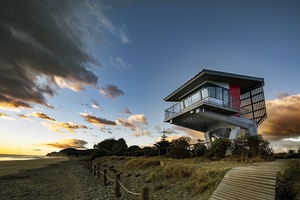
Waimarama Surf Life Saving Club by Paris Magdalinos Architects
Form, function and fun combine in this dynamic cantilevered building perched on the edge of the Waimarama dunes. The visual strength and positioning of the structure oozes confidence and control with all sightlines open for the surf-life saving club members, while allowance is made for public walkways that may pass under the building in the future. The colours and materials blend the national surf lifesaving colours with hardwearing, low-maintenance materials that will enable this important vantage post to remain in place for years to come.
All winners of the 2017 Gisborne/Hawke’s Bay Architecture Awards are eligible for shortlisting in the New Zealand Architecture Awards, which will be decided later in the year, and announced in November.


